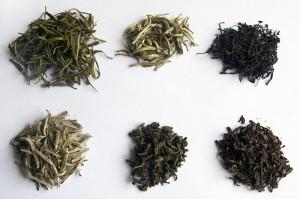Whether you are from a majority ethnic Chinese community like Singapore, China and Taiwan one where Chinese are a minority, you probably would have heard of the phrase “Chinese tea”.
Your first encounter might have been in Chinese restaurants or tea houses and you might have some conceived notions about what Chinese tea is.
Here are 5 things that you might not have known earlier about “Chinese tea”.
Every type of tea first begun in China
This is not merely in reference to the processing of the Camellia sinensis plant for consumption but each of the 6 basic categories of tea, namely

ii) White
iii) Yellow
iv) Oolong- a category of tea, often misunderstood to a particular variety name
v) Black- though it is produced all over the world, its roots are Chinese as we will discuss later
vi) Dark tea- also known as post-fermented tea though Puer is often erroneously classified is a standalone category
Singled out for particular mention is black tea- i.e. the tea that is often known as ‘English tea’ or ‘Western tea’, often consumed with milk and sugar.
Though most of the black tea consumed worldwide- especially in Western countries- is predominantly produced in India, Kenya and Sri Lanka, its roots can be traced to China.
In fact, Indian and other British colonies first started producing tea based on tea shoots imported with certain thievery (no kidding, to illustrate what levels of sneakiness he resorted to, Robert Fortune disguised himself as a Chinese) from Fujian.
Some of the Chinese laborers went over with Robert Fortune to provide the technical knowledge for the production of black tea all over the world today.
Chinese tea is the most diverse
A common misperception many people have or had at some stage is that Chinese tea only consists of a few types- usually oolong or Puer (covered in the next point).
However China is the only country in the world to produce all 6 categories of teas.
Green tea- China’s most widely produced tea at over 70%, Japan and Korea produces quality offerings as well
White tea- though there are some other areas that produce it, quality is an issue
Yellow tea- as above
Oolong tea- there are some pretty decent ones from Thailand, New Zealand and Vietnam, most of them owned or at least managed by Taiwanese and produced in that style
Black tea- grown all over the world
Dark tea- though there is some small production in Japan for example, the most valued ones are found in China- Puer, Liuan Heicha, Hunan Heicha
There is more than one “Chinese tea culture”
Often when it comes to Chinese tea culture, we think of gongfu tea together with oolong and puer.
This is more attributable to the fact that most of the Chinese community overseas and their descendants originated from Southern China, especially Fujian and Guangdong.
Fujian of course is the hometown of oolong tea and many Fujian people while Chaozhou in Guangdong is the home of gongfu tea. Guangdong- especially Guangzhou- is arguably as influential as Kunming, Yunnan to the spread of Puer.
That gives Southern Chinese tea culture a disproportional global influence. (More about this here)
In fact, in Jiangsu, Zhejiang and Jiangxi, gongfu tea is not ubiquitous. Most people drink green tea out of a glass.
In northern China such as Beijing, “tea” is usually either scented tea- such as Jasmine tea- or herbal teas.
In Yunnan, Xinjiang and Tibet, tea is often consumed by stewing instead of infusing.
In short, Chinese tea culture is not uniform throughout China.
From peasantry to aristocracy
You probably heard of the 7 essentials, namely firewood, rice, oil, salt, condiments, vinegar, and tea (柴米油盐酱醋茶), illustrates the indispensable nature of tea.
There are also the 7 treasures, namely musical instruments, chess, books, paintings, poetry, wine, and tea (琴器书画诗酒茶).
It can be accessible for the common man.
It can be a luxury that a leader would deem fit to give to another leader.
Part of the reason why the best tea is produced in China is because it is part of the culture to give the finest tea to valued associates.
Rich businessmen and government officials think nothing of bidding top dollar for the most valued teas- Shifeng Longjing, Dahongpao etc- to give to their associates to demonstrate how valued they are.
Yet at the same time tea can be a daily commodity.
The range is THAT wide.
Chinese tea doesn’t need to taste bitter
Once at an event, I met a lady and had this exchange with her:
Lady: Do you sell English tea?
Me: No, we only sell teas from China and Taiwan.
Lady: I don’t like Chinese tea. It is bitter.
Me: You had a cup (of Silver Needles- authentic Fujian ones) earlier, does it taste bitter?
Lady: No, but Chinese tea is bitter.
I didn’t say anything after that.
But this perception is rather common. Bitterness can be a result of brewing methods which I wrote about here.
It is not that ‘English tea’ is not bitter; it is just that you mask it with milk and sugar whereas Chinese tea is consumed straight up.
But with proper brewing and reasonable quality, it doesn’t need to taste bitter (though some good ones are bitter but that is another story).
Just hold the milk and sugar.
Plus, Chinese tea is cool too!
See more articles on overviews of various categories of tea


